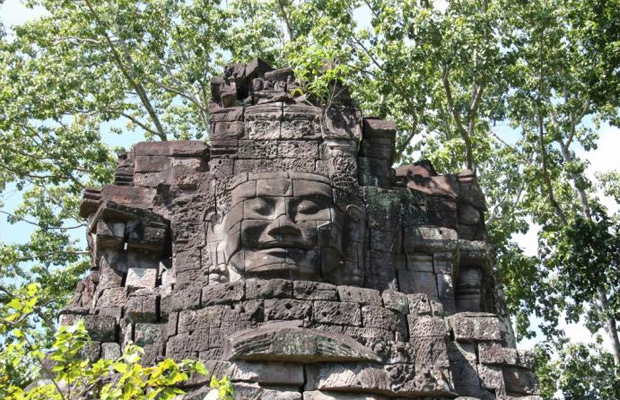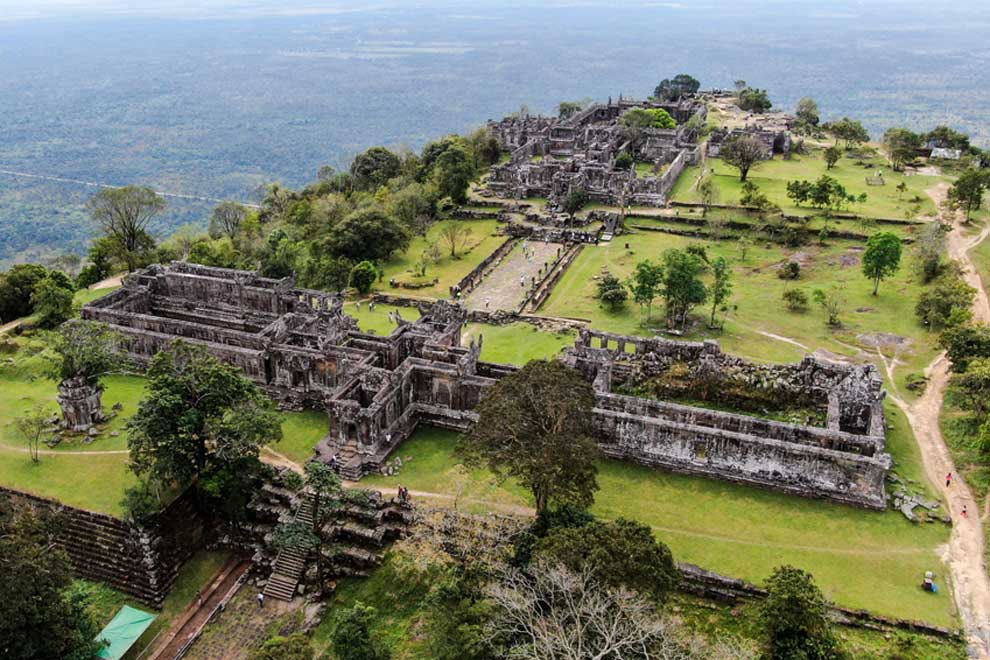Preah Vihear
Preah Vihear
Kampong Svay Temple is an ancient and historically significant temple complex located in Kampong Thom Province, Cambodia. It is one of the more remote and lesser-known archaeological sites in the country, yet it holds great importance in understanding the early history of the Khmer Empire and the development of religious architecture in Cambodia.
Kampong Svay Temple dates back to the 12th century, during the reign of the Angkorian period. It is associated with the early stages of the Khmer Empire, which is known for its grand religious and architectural constructions. The temple complex is dedicated to Hinduism and reflects the influence of Hindu temples during the time it was built, particularly under King Suryavarman II, who reigned from 1113 to 1150 and is best known for constructing Angkor Wat.
It is thought to have served as a place of worship, as well as a royal sanctuary. The site may have been connected to the broader Angkorian religious and administrative network. The temple complex of Kampong Svay is built in the classic Khmer style, with a combination of sandstone, laterite, and brick. Like many early Angkorian temples, it incorporates tower structures, sanctuaries, and opens courtyards. The Kampong Svay Temple complex remained largely unknown to the public for many years, as it is located in a more remote part of Cambodia, away from the more famous Angkor sites.
The Kulen Prumtep Wildlife Sanctuary is an important protected area located in Preah Vihear Province in northern Cambodia. Spanning over 2,000 square kilometers, it is one of the largest wildlife sanctuaries in the country and plays a crucial role in preserving the region’s rich biodiversity and natural ecosystems. The sanctuary also supports a variety of bird species, including hornbills, eagles, and vultures, making it an important site for birdwatching. The Kulen Prumtep Wildlife Sanctuary is a priority area for conservation due to its rich biodiversity and its role in protecting endangered species. The Cambodian government, along with local and international organizations, is working to preserve the sanctuary’s natural resources. Visitors can explore the natural beauty of the area through trekking and wildlife spotting. Although the sanctuary is remote, it offers opportunities for tourists to experience Cambodia’s natural heritage in a more untouched and pristine environment.
Prum Tep Nimith Waterfall is a breathtaking natural attraction located in the lush forests of Preah Vihear province in northern Cambodia. The waterfall, known for its pristine beauty and tranquil surroundings, has long been revered as a sacred site by local communities and visitors alike. According to local legends, Prum Tep Nimith Waterfall holds a special significance in Cambodian folklore. It is believed that the waterfall was created by the gods as a gift to the people, providing them with a source of life-giving water and spiritual nourishment. The cascading waters of Prum Tep Nimith are said to possess healing powers and mystical properties, drawing pilgrims and seekers of spiritual enlightenment to its sacred pools. Prum Tep Nimith Waterfall is not only a cultural treasure but also an ecological gem that supports diverse flora and fauna in its pristine ecosystem. The surrounding forests provide habitat for rare species of plants and animals, contributing to the biodiversity of the region. Conservation efforts are underway to protect the waterfall and its natural surroundings from environmental degradation and unsustainable development, ensuring that future generations can continue to enjoy its beauty and benefits.
The Preah Vihear temple is an ancient Hindu temple complex located on a 525-meter cliff in the Dângrêk Mountains, on the border between Thailand and Cambodia. This magnificent temple is dedicated to the Hindu god Shiva and is renowned for its stunning location and intricate carvings. The history of Preah Vihear temple dates back to the 9th century when construction of the temple began during the reign of King Yasovarman I of the Khmer Empire. The temple was used for religious ceremonies, royal processions, and as a site for astronomical observations. In the 11th century, King Suryavarman II, who also built Angkor Wat, further expanded and enhanced the Preah Vihear temple complex. Under his rule, the temple became a major pilgrimage site for Hindus and was considered a sacred place of worship. Over the centuries, the temple fell into disrepair and was abandoned as the Khmer Empire declined.
Koh Ker is a remote archaeological site in northern Cambodia that served as the capital of the Khmer Empire for a brief period during the early 10th century. The temple complex is located in the dense forests of the Preah Vihear province, approximately 120 kilometers northeast of Angkor Wat. Koh Ker was established as the capital by King Jayavarman IV, who ruled from 928 to 944 AD. During his reign, Jayavarman IV initiated a series of ambitious building projects, including the construction of numerous temples and shrines at Koh Ker. The temple complex covers an area of approximately 81 square kilometers and includes more than 180 structures, many of which are still buried beneath the jungle vegetation. After Jayavarman IV’s death, Koh Ker was briefly abandoned before being reclaimed by later Khmer rulers. The site continued to be used as a religious and ceremonial center until the 13th century when it was largely abandoned and fell into disrepair. In the late 19th century, French archaeologists began to uncover and restore the temples of Koh Ker, bringing international attention to the site. Today, Koh Ker is a UNESCO World Heritage site and a popular destination for tourists seeking to explore Cambodia’s rich history and cultural heritage.
Create Your Dream Tour!
Feel free to adjust any details or add specific information relevant to your destination or travel agency. Let me know if you need further customization!





